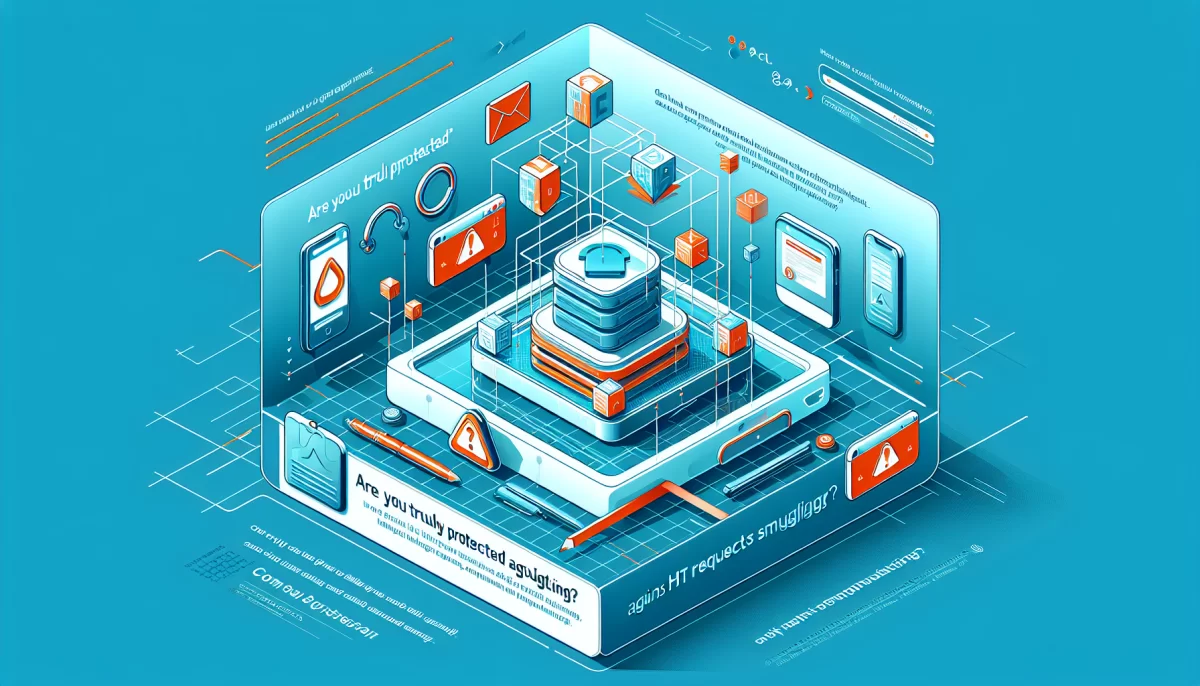Are You Truly Protected Against HTTP Request Smuggling?
HTTP request smuggling continues to pose a significant and often underestimated threat to web security. Despite increased awareness since it was widely publicized in 2019, many organizations remain vulnerable due to insufficient detection methods and flawed testing approaches. This article explores the nuances of HTTP request smuggling, examines limitations of traditional security tools, and highlights how emerging detection strategies provide more comprehensive protection.
Understanding the Hidden Danger of HTTP Request Smuggling
HTTP request smuggling exploits inconsistencies in the way different servers or proxies interpret and parse HTTP requests. Attackers leverage these discrepancies to “smuggle” malicious requests that bypass security controls, enabling a range of attacks including session hijacking, cache poisoning, and cross-site scripting (XSS).
According to a detailed study by the Open Web Application Security Project (OWASP), HTTP request smuggling is among the top 10 web application security risks due to its complexity and potential for severe exploitation (OWASP Top 10).
Key Vulnerabilities Caused by Request Smuggling:
- Session Hijacking: Attackers can intercept or manipulate user sessions by injecting unauthorized HTTP requests.
- Cross-Site Scripting (XSS): Smuggled requests can deliver malicious scripts to unsuspecting users.
- Cache Poisoning: Poisons web caches, serving harmful content to legitimate users.
- Security Bypass: Enables attackers to bypass firewalls, WAFs, and other filtering mechanisms.
Why Traditional DAST Tools Fail to Detect Complex Desync Attacks
Dynamic Application Security Testing (DAST) tools are commonly deployed to identify vulnerabilities by simulating attack payloads. However, when it comes to HTTP request smuggling, traditional DAST tools exhibit several critical weaknesses:
- Over-reliance on Known Payloads: Most tools depend on pre-configured test cases targeting well-known request smuggling types such as CL.TE (Content-Length then Transfer-Encoding) or TE.CL, missing novel or subtle desynchronization techniques.
- Surface-Level Detection: Testing typically focuses on symptom detection—i.e., observing server errors or timeouts—without analyzing root parsing discrepancies.
- Limited Protocol Awareness: Neglect of HTTP/2 and downgrade scenarios from HTTP/2 to HTTP/1.x, which are emerging vectors for request smuggling exploitation.
A 2024 research report by Gartner emphasized that “traditional scanning tools detect less than 40% of complex HTTP request smuggling vulnerabilities, especially in environments with layered proxies or mixed protocol use” (Gartner, 2024).
Advanced Detection Through Parsing Discrepancy Analysis
Modern detection strategies move beyond simple payload testing to analyze the fundamental differences—also called “desync primitives”—in how front-end and back-end servers parse HTTP requests. This root-cause level examination allows for more reliable uncovering of potential vulnerabilities.
- Automated Analysis of Parsing Behavior: Tools simulate and detect how requests are interpreted differently, identifying nuanced desynchronization opportunities.
- Uncovering Unknown Vectors: By studying parsing mismatch patterns, the approach flags potential zero-day request smuggling techniques.
- Reduced False Positives/Negatives: Root-level analysis minimizes noise from superficial tests, improving detection accuracy.
For instance, a recent case study involving a major financial institution revealed that adopting parsing discrepancy detection uncovered multiple hidden request smuggling vulnerabilities that had eluded detection by conventional scanners for over two years (InfoSecurity Magazine, 2025).
The Role of Research and Expertise in Combatting HTTP Request Smuggling
James Kettle, a leading authority in HTTP request smuggling, has been instrumental in evolving the community’s understanding since first introducing the widespread risk in 2019. His groundbreaking research highlights newly emerging attack classes and emphasizes the necessity of ongoing innovation in detection methods (PortSwigger Research, 2025).
Key takeaways from current research include:
- Request smuggling vulnerabilities are exacerbated in complex infrastructure scenarios involving multi-layer proxies, cloud-based edge networks, and mixed protocol environments.
- Future exploit techniques will likely leverage HTTP/2 downgrade vectors and complex header manipulations.
- Continuous integration of fresh detection logic aligned with active research is critical to maintaining security posture.
Strategic Steps to Mitigate HTTP Request Smuggling Risks
Given the complexity and evolving nature of HTTP request smuggling, organizations should adopt a multi-layered security approach including:
- Comprehensive Testing: Use advanced testing methodologies that analyze parsing discrepancies rather than relying solely on signature-based detection.
- Protocol Hardening: Enforce strict HTTP protocol standards and validate header consistency across proxies and servers.
- Infrastructure Simplification: Reduce complexity in HTTP processing chains to minimize desync opportunities.
- Continuous Research Monitoring: Stay informed on emerging request smuggling research and integrate cutting-edge detection technologies accordingly.
- Penetration Testing: Engage skilled pentesters who specialize in desync attack vectors to proactively identify weaknesses.
Conclusion: Prioritize Root-Cause Detection to Secure Web Infrastructure
HTTP request smuggling remains an insidious and evolving web security threat that eludes traditional detection tools. For enterprises managing complex web apps, proxies, and mixed HTTP environments, superficial testing is insufficient and potentially dangerous.
By adopting detection approaches based on parsing discrepancy analysis and integrating continuous, research-driven detection updates, organizations can effectively uncover and mitigate request smuggling vulnerabilities. This proactive stance is essential to protect critical applications from some of the most sophisticated evasion techniques seen in recent years.
Key points to remember:
- HTTP request smuggling exploits server-side parsing differences to bypass security.
- Traditional DAST tools are limited to simple payload detection and often miss complex attacks.
- Parsing discrepancy analysis uncovers root-cause vulnerabilities with higher accuracy.
- Ongoing research and proactive testing are key to staying ahead of new desync attack vectors.


